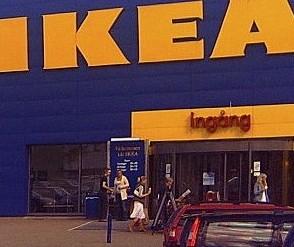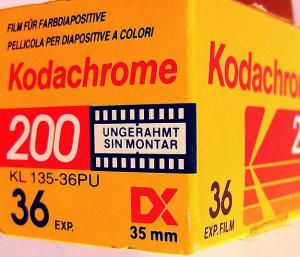Renewable Energy Now Neck and Neck With Nuclear

New renewable energy projects are showing up all across the US, and in 2010, the amount of green energy generation finally caught up with nuclear. According to data from the U.S. Energy Information Administration, an independent group, nuclear energy and renewable energy each produced about 11% of the United States' power supply in the first nine months of 2010. This happened while nuclear power construction has stalled-- the industry searching for a new business model-- and renewables are on a roll. Writer Brit Liggett at Inhabitat.com broke out the numbers in the report:
Within that group of "renewable energy" sources, biomass and biofuels
accounted for 51.95%, hydropower for 31.50%, wind for 10.52%, geothermal for 4.65%, and solar for 1.38%.
All of the sources of energy within that group are on the rise with only hydropower declining--by 5.2%. In 2010 compared to the same period in 2009, solar grew by 2.4%, biomass/biofuels increased by 10.0%, and wind grew by 26.7%. When combined, non-hydro renewables expanded by 11.5% and nuclear declined by .5% from the same period of 2009 to 2010.
IKEA Stops Selling Incandescent Light Bulbs

IKEA, one of the biggest of the big-boxes, has just pulled the plug on Thomas Edison's 130 year old incandescent light bulb in its US stores. (I'm sure Edison, compulsively competitive, would have been wondering 'what took so long?'). The switch began last August and was completed on January 1st.
Disrupting the utopia of unlimited shelf space, IKEA is the first major US retailer to take this step--but they'll soon be followed by the laggards. The 2007 Energy Independence and Security Act forces all retailers to make the same change between 2012 and 2014. Although this probably won't ignite more "Don't touch my junk" political protests, brace yourself for a flurry of Facebook invitations to "Save the Dim Bulb."
In a press release, Mike Ward, US IKEA President said, "Eliminating incandescents is a simple way to lead the charge for IKEA customers to use energy saving light bulbs, reducing energy consumption... It's a

little step with a big impact on our planet..." But this wasn't just a one-off promotional spin. The retailer has also experimented with both solar power and geothermal power for some of its stores.
Any customers caught off guard, can be led dazed and confused to aisles of LEDs, CFLs, halogen lamps, and even solar powered lights, all more energy efficient than traditional bulbs.
Just this week, California became the first state to phase out incandescents. Like IKEA, the state chose to put the new standards in place a year before they are federally mandated. Remember: as California goes, so goes the nation. And that includes unemployment.
Last Roll of Kodachrome Processed

Digital photography has just culled another wounded product from the cash register impulse-shopping rack.
Kodak's Kodachrome, considered by many the world's first color film, was created in 1935, eventually becoming indispensable at birthdays, holidays, and vacations. Every baby boomer slide show was a Kodachrome production--anticipated by friends and family with enjoyment and dread. Parents, who hadn't gone home before the white screen had been rolled down, knew they'd be paying their babysitters overtime. And at one point there were labs processing the film all over the world.
Its iconic status as a lushly colored repository of memory was acerbically celebrated in the mid-1970s with a song of the same name by Paul Simon:

Kodachrome
You give us those nice bright colors
You give us the greens of summers
Makes you think all the world's a sunny day, oh yeah!
I got a Nikon camera I love to take a photograph
So Mama, don't take my Kodachrome away
The film's ability to capture rich, vibrant colors also made it a favorite among professional photographers like Steve McCurry, who created the iconic portrait of an Afghan girl for the cover of the National Geographic Magazine in 1985. Click to read the original article and see the photo.
As demand dwindled, one by one the labs closed. In June 2009, Dwayne's Photo in Parsons, Kansas, was the last lab left in the country processing the film when Kodak announced it would discontinue Kodachrome because so many photographers had turned to digital cameras or competing Fuji film. In the end, Kodachrome made up less than 1 percent of Kodak's still-picture sales. That sad fact was explained by Kodak officials:
"The majority of today's
photographers have voiced
their preference to capture images
with newer technology--both
film and digital," said Mary Jane
Hellyar, president of Kodak's
Film, Photofinishing and
Entertainment Group.
Kodak gave its last roll of Kodachrome to photographer Steve McCurry, the artist behind "Afghan Girl," whose final footage can be viewed at NPR.
Read an emotional New York Times article about Kodachrome's final days at Dwayne's Photo. Along with thousands of other rolls, Dwayne's processed Steve McCurry's last roll of Kodachrome--which he personally hand-delivered.
You can order a Dwayne's Photo commemorative T-shirt from their website for $12.95
What other trends have you spotted?
Photo: Dwayne's Photo T-shirt--Dwaynes's Photo website screengrab
Photo: Spiral CFL Bulb- Sun ladder Wikicommons
Photo: Nuclear power plant--Photorush wikicommons
Photo: Wind Turbine-- Harvey McDaniel Wikicommons
Photo: Solar Array- US Air Force Airman 1st Class Nadine Y Bradley -- PD
Photo: Kodachrome box-Kungfuman wikicommons
Photo: IKEA - GFDL wikicommons
Photo: Girls in bathing suits-- litlnemo photostream flicker




